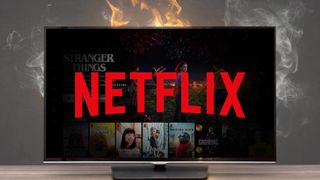Netflix Ads: The Streaming Giant's New Frontier in Advertising
Netflix Ads: The Streaming Giant's New Frontier in Advertising
Blog Article
Netflix, once proudly ad-free, made headlines in late 2022 if this launched its ad-supported subscription tier — a bold shift looking at the original business structure. For years, system focused on premium, uninterrupted content. But as growth plateaued and competition intensified, Netflix joined the broader streaming trend of monetizing content through advertising.
So simply what does this mean for brands, marketers, and viewers?
Why Netflix Introduced Ads
Several factors pushed Netflix toward advertising:
Subscriber Growth Challenges: As the streaming market matured, Netflix experienced slowdowns in new user growth, specially in saturated markets just like the U.S.
Revenue Diversification: Ads provide a new income stream without raising prices for existing users.
Market Pressure: Competitors like Hulu, Disney+, and HBO Max already offer ad-supported plans — and successfully monetize them.
Netflix responded by launching the “Basic with Ads” plan in partnership with Microsoft, allowing users to access content better value, sustained by limited ads.
How Netflix Ads Work
Netflix’s ad-supported tier provides a more affordable subscription (priced below the standard plans) and includes four or five minutes of ads hourly of content. These ads appear before and during TV shows and films, but not on all content (on account of licensing restrictions).
Key Features of Netflix Ads:
Ad Format: 15 to 30-second video ads, placed in the beginning or mid-roll of content.
Targeting Capabilities: Ads are shown based on broad demographics like age, gender, and content preferences.
Brand Safety: Netflix is cautious with ad placement, making sure brands don’t appear next to controversial or inappropriate content.
Premium Inventory: As a platform famous for high-quality original content, Netflix provides a brand-safe, prestige environment.
Benefits for Advertisers
Access to a Global Audience: Netflix reaches over 260 million subscribers worldwide. The ad tier opens access with a portion of this audience.
Engaged Viewership: Streaming users usually are highly engaged, especially with original shows and movies. This increases ad effectiveness.
Exclusive Inventory: Limited ad slots mean less competition for attention, making each impression more significant.
Partnership with Microsoft: Netflix’s advertising is powered by Microsoft’s platform, offering robust tools for purchasing, targeting, and measuring campaigns.
Early Performance & Industry Reaction
Initial reports advise that advertiser interest is strong but cautious. Many brands see Netflix like a premium opportunity, specifically storytelling campaigns and brand-building, but they are waiting for better targeting and gratifaction data.
Some key takeaways thus far:
CPMs (Cost Per Thousand Impressions) are relatively high when compared with other platforms — reflecting Netflix’s premium brand.
Ad inventory is bound, by design, to keep a user-friendly experience.
Netflix offers to expand targeting and introduce new formats (e.g., interactive ads or product placements).
Challenges Netflix Faces in Advertising
Limited Measurement Tools: Netflix’s advertising features are still developing, and advertisers want heightened attribution and analytics.
Content Restrictions: Not all licensed content is eligible for ads, limiting inventory.
User Expectations: Netflix must balance ad monetization using its legacy as a possible ad-free service — a delicate line to steer.
What’s Next for how long are netflix ads?
Looking ahead, Netflix is expected to:
Expand its ad offering to more markets.
Introduce heightened targeting options, including behavioral and interest-based.
Explore ad-supported live events, gaming, or sports content.
Enable product placement and interactive advertising — potentially allowing viewers to visit items they see in a show.
Netflix Ads represent a substantial shift in the streaming landscape. For advertisers, it opens a fresh, high-impact channel to arrive at valuable audiences in a premium, content-rich environment. For viewers, it provides a more affordable approach to enjoy Netflix — with minimal, well-curated ads.